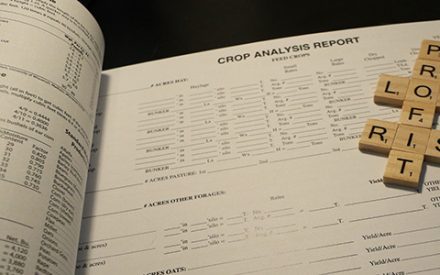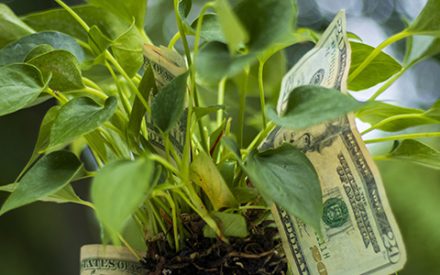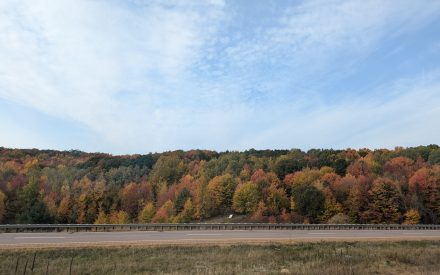Video Summary
In this video, Lindsey Rushford, Nitrogen Optimization Outreach Specialist with UW–Madison Extension, presents highlights from the 2024 Annual Report of the Nitrogen Optimization Pilot Program (NOPP). She explains how the program supports farmer-led, on-farm nitrogen rate trials to improve nitrogen use efficiency and inform statewide recommendations.
Lindsey shares insights from over 100 trials, including how farmers are testing nitrogen rates alongside practices like cover crops, manure management, and biological products. The presentation also introduces new, less intensive trial options launching in 2026–2027 and emphasizes the importance of outreach, collaboration, and data sharing across Wisconsin.
Resources
- Nitrogen Optimization Pilot Program (UW–Madison) – Annual reports, project spotlights, events, and more
- Nitrogen Optimization Pilot Program (DATCP) – Grant information, application timelines, participant requirements, and more
- 2024 Nitrogen Optimization Pilot Program Annual Report
Transcript
0:05
All right, Thank you, Liz.
0:08
Yeah, as Liz mentioned, I’m coming from a field day, had to leave a little bit early, but you know, it’s cool to see folks sharing about their NOPP trials throughout the season, and they’re kind of taking a handle of those, which is great.
0:21
So again, I’m Lindsey Rushford.
0:22
I’m the Nitrogen Optimization Outreach Specialist in Extension.
0:28
Move some things around here on my screen.
0:32
All right, okay, dive right into it.
0:35
And these are my colleagues.
0:36
Can’t go ahead without acknowledging them as well and all the roles that they play to make this program successful.
0:43
So this is you’ll hear, if you haven’t heard of NOPP before, we call it nitrogen optimization pilot program.
0:49
NOPP.
0:50
Nop.
0:51
Nope, you’ll hear it all, but it’s all the same thing.
0:54
I tend to go with NOPP.
0:55
So this program offers grants to agricultural producers to conduct 2 year on farm nitrogen rates studies to enhance the understanding of commercial nitrogen fertilizer use.
1:08
So far we’ve had three cycles of projects that have been funded that support farmer driven research questions that also provide statewide benefits.
1:19
And the importance of solid partnerships is becoming clear year after year.
1:25
One example is just the field day I came from that was being planned by the farmers involved in the particular project and their county staff and extension educators involved in that.
1:35
So shout out to all the partners who have been out in the fields taking samples, hosting field days, scouting fields, helping to set up these trials correctly.
1:48
They couldn’t be done with all all the partners that are involved in that.
1:53
So one of the things that makes the program so unique is that folks are applying for projects that really resonate with them.
2:00
These are questions that can fine tune nitrogen management locally on their farms to meet their economic, agronomic and conservation goals.
2:10
From there, we’re seeing a ripple effect of regional sharing and learnings through meetings or field days.
2:17
And the data generated by each trial will feedback into a nitrogen response database to support statewide nitrogen recommendation.
2:26
So the data from these trials is not staying on farm, though that is the main goal to, you know, help help farmers to make better decisions based on their trial results.
2:38
But also that these this data is reaching beyond their farm and able to influence others in the state.
2:46
So from this 2024 annual report that Liz mentioned, we just got it sent out into the world.
2:53
And so there should be some links kind of popping up as I’m talking to go find that.
2:58
So, so far, Nopp has supported 105 on farm trials.
3:03
So that is in 2023-2024 and 67 of those were in 2024.
3:10
And participating farms cover over 100,000 acres in Wisconsin.
3:16
So again, we just released this report.
3:18
This is I’m just going to do a small snippet of items from that, but you can read more about what this program has accomplished and read through some farmer and partner stories, see some pictures and more things like that to kind of get an idea of what the program is accomplishing so far.
3:37
So NOPP is a versatile program and that’s reflected in the crops represented here.
3:41
Obviously we have, you know, heavy and corn grain, but that’s not to say that we don’t have other crops well represented and setting up trials that answer questions that they have as growers.
3:55
The program is also versatile in the types of projects that are funded.
3:59
In 2024, a handful of trials were nitrogen rate only studies, but others were designed to investigate the impact of a management practice on their nitrogen rates.
4:11
So some examples are, you know how does manure impact my nitrogen rates, how does vary two different manure rates, how do those might impact my nitrogen rates, the nitrogen application timing or frequency.
4:27
So we’re seeing those especially in potato and cranberry situations, cover crops with or without a cover crop.
4:35
What happens if I terminate early versus late?
4:38
What happens to my cash crop if I intercede my cover crop?
4:42
So these are all questions that folks are trying to answer with their N rate trials in addition to products and technology.
4:49
So some folks are interested in the biological nitrogen fixing products are can they help us with reducing our nitrogen rates or utilizing variable rate nitrogen applications as well.
5:05
So while we have a diversity of projects investigating different topics across all of the projects, we’ll evaluate how yield responded to different nitrogen treatments.
5:17
So in this case, we are seeing on the screen, we’re looking at corn yield across different rates and we’re looking at nitrogen rate on the X axis and yield at each of those rates.
5:30
So this particular trial had six nitrogen rates and they replicated 4 times.
5:35
So you see four data points at each of those rates.
5:39
So using this data, we’re able to calculate a nitrogen response function.
5:44
So that’s the curve you see fitted to the data points and identify the agronomic and economic optimum nitrogen rates.
5:52
The AONR is the nitrogen rate that maximizes yield.
5:57
Well, the EONR is the nitrogen rate that maximizes profit.
6:01
So these are two data points that we hope to get for each trial that’s participating.
6:07
So these data points can be used to help understand how the crop responded to nitrogen fertilizer on that farm in the context of that growing season and can be used to fine tune nitrogen management for that given field.
6:21
So this is something that hopefully can be calculated with each trial and each project is needs to go on for at least two years.
6:28
So as we were just talking about weather this, you know, the weather can impact this response to nitrogen as well.
6:35
So at least two years to see how your yield is responding to nitrogen is important.
6:44
So participants in NOPP are also sharing their typical nitrogen fertilizer rates.
6:50
And so we’re able to plot this business as usual rate on the X axis and compare it to their EONR that was generated from their nitrogen response trial.
7:02
So there’s a dash line across this figure diagonally and if a data point is on that line, it’s indicative that the farmers typical rate is similar to the EONR from their trial.
7:16
This is really great to see.
7:20
If a data point is below the dashed line, it indicates that the economic optimum nitrogen rate is actually lower than the farmer’s typical rate.
7:30
This is helpful because the farmer could see potential cost savings in the future on this field if they find that their economic optimum nitrogen rate is lower than what they may have been already applying to that field.
7:46
So participants in NOPP know that outreach alongside on farm research is just as valuable as the data collection and results.
7:54
Again, we don’t want this data to sit with the farmer.
7:59
That is the main goal, but we want it to reach beyond the farm that’s participating as well.
8:04
So in 2024 alone, NOPP results and experiences were shared at at least 7 conference sessions, 16 field days, and 19 meetings.
8:15
This highlights the value of partners and collaborators in on farm research.
8:20
So producer-led watershed groups, county conservation staff, agronomists and farmers are sharing what they’re learning and having meaningful conversations about the complexities of nitrogen management and how to improve.
8:35
Not saying that all these conversations are answering all the questions and finding all the solutions, but it’s it’s generating conversations that may not have been happening before.
8:46
So if you’re interested in learning about some of the trials that are going on right now, you can peruse some of these field days that are coming up.
8:55
I know that someone’s maybe going to pop some Flyers or links in the chat so you can get more details.
9:01
But if you see one on here that’s near you on a date that you’re available, you can check that out.
9:06
We’re happy to see you at any of these and continue the conversation with that.
9:13
So we are excited that the state has awarded another $1 million per year for NOPP to support on farm nitrogen research in 2026 and 2027.
9:25
So that just came out with the new state budget.
9:28
So a majority of funds will continue to support farmers and partners conducting nitrogen rate trials across their typical management or alongside additional management treatments like cover crops and manure as I mentioned earlier.
9:41
So this is the kind of the traditional setup of NOPP and we’re going to continue that, but we’re also going to be expanding programming this year with this new cycle to fund opportunities for less intensive on farm research trials.
9:56
So for this tier one that we’re calling it the existing structure of NOPP, there is a lot of work and we’re so glad that folks have been diving in and wanting to participate in that.
10:07
We know that it’s been a barrier though to a lot of people who do want to conduct on farm nitrogen assessments or trials, but this is just a bit too much for them or they want to kind of ease in to something that’s less intensive.
10:21
So the first new option is nitrogen management research trials, which will be smaller still replicated trials that investigate other nitrogen management practices including nitrogen application timing or method source or additives.
10:39
And then the second option that will be available is a field level nitrogen use efficiency assessment to evaluate the agronomic, economic and water quality risk indicators of your current nitrogen management practices using a 0 nitrogen test strip, nitrogen use efficiency metrics and nitrogen budgeting.
11:03
So we’ll be launching more details about those additional options at the end of October and with the RFP in October, we’ll be releasing more details about this in August.
11:14
And then the RFP and application for the new cycle should be released in October with yet more information about these new options.
11:22
So stay tuned For more information on that.
11:27
And that comes to the end of my portion.
11:29
I appreciate the time.
11:31
This QR code will lead to the DATCP’s NOPP web page and that there you can actually sign up for alerts when new information about NOPP is released from DATCP.
11:44
So that’s a cool feature that you can set up there.
11:50
I’m going to stay on for the rest of the webinar.
11:51
See if you have any questions you can reach out to me or here’s contact information for myself, my colleague Monica Schauer, who’s the research director for NOPP.
12:00
So if you have technical questions about setting up a trial, what kind of samples to take for that, you can ask her.
12:07
And Susan Mockert, who’s the program manager at DATCP.
12:10
So anything related to the actual grants and applications and things like that can go to her as well.
12:17
Thank you.
12:19
Great.
12:20
Thanks so much, Lindsey for sharing all that great information.
12:23
And that team is really great about helping you get the trials set up that you’re interested in.
12:29
So absolutely reach out to Lindsey if you have any questions or ideas for an NOPP project and they’re more than willing to help you get through that process.
12:38
So Lindsey will be on.
12:40
You can always put questions in the chat and we’ll get to them at the end of the session.
Badger Crop Connect
Timely Crop Updates for Wisconsin
Second and fourth Thursdays 12:30 – 1:30 p.m.
Live via Zoom

 ▶ Fall 2025 Financial Assistance for Producers
▶ Fall 2025 Financial Assistance for Producers ▶ Fall 2025 Ag Policy Update
▶ Fall 2025 Ag Policy Update ▶ Fall 2025 Corn and Soybean Market Outlook
▶ Fall 2025 Corn and Soybean Market Outlook ▶ November 6 Ag Weather Outlook for Wisconsin
▶ November 6 Ag Weather Outlook for Wisconsin


